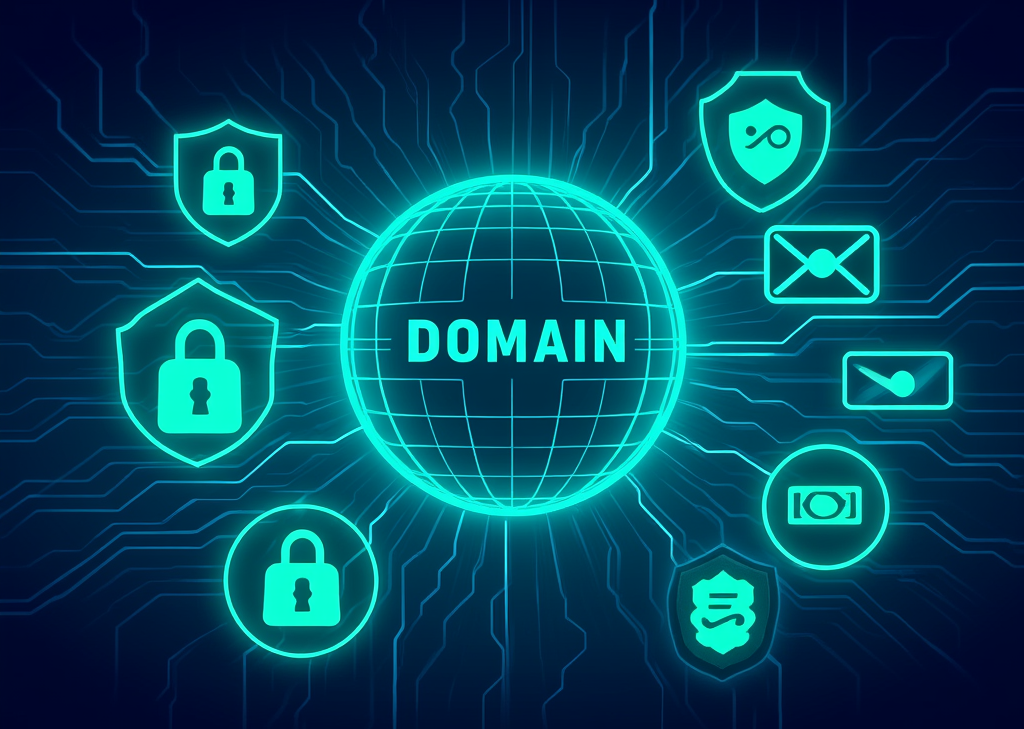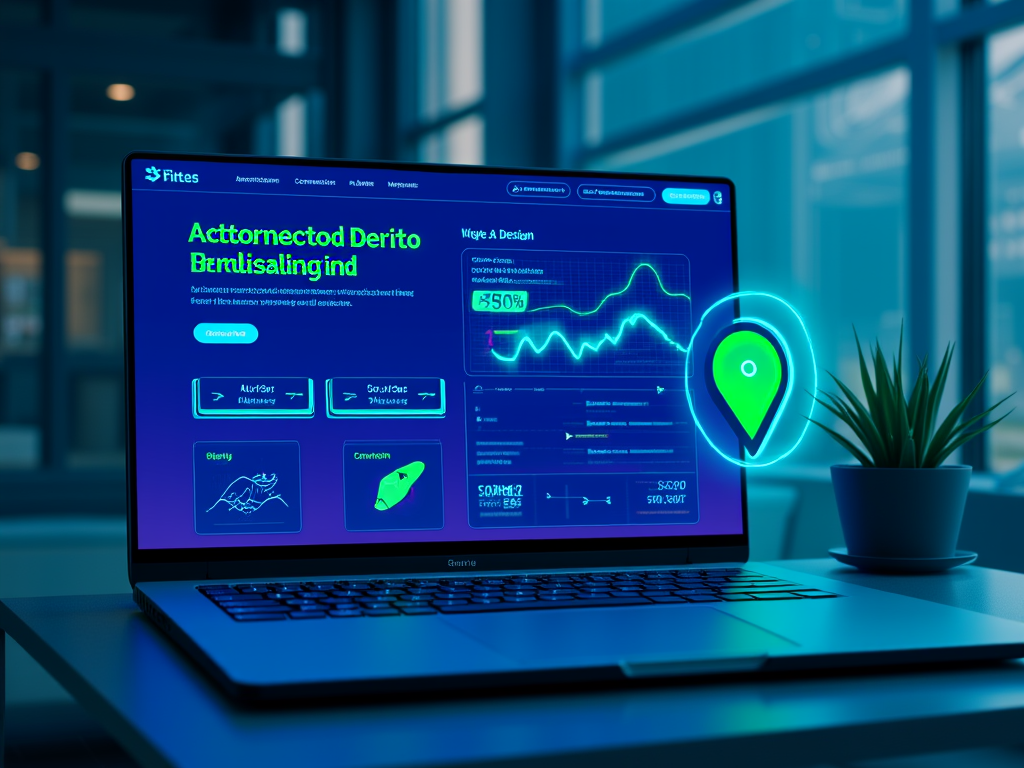Meta Description:
Discover effective strategies to shield your domain from cyber threats. Learn about selecting secure registrars, implementing DNS security, and other essential protective measures.
Introduction
As the digital landscape continues to evolve, so do the tactics employed by cybercriminals targeting unsuspecting individuals and businesses alike. The domain name, often perceived as just an address, is a crucial asset that can drastically influence your online identity. When compromised, it can lead to severe repercussions ranging from reputational damage to financial loss. Thus, understanding how to defend your domain against an array of cyber threats has become paramount.
How to Protect Your Domain from Cyber Threats
1. Choosing a Secure Registrar
The first line of defense starts with selecting a reliable domain registrar. Think of it as choosing a fortress for your online presence. A secure registrar should boast features like multi-factor authentication (MFA) and a dedicated support team ready to respond around the clock. When browsing registrars, consider these factors:
- Reputation: Opt for a registrar with a solid track record. Online reviews and user experiences can reveal a lot.
- Security Features: Look for options providing advanced security features like DNS management and domain locking, which is akin to having an extra lock on your castle gate.
2. Securing Domain Access
Once you have your fortress, it’s crucial to safeguard access to it. The control of your domain registration must be tightly restricted.
- Enable **two-factor authentication (2FA)**—this means even if a bad actor manages to get your password, they’d still need a second credential to access your domain.
- Consider IP address restrictions. This will empower you to limit administrative access to specific networks, minimizing exposure to potential hacks.
- It goes without saying, but use strong passwords. Think of each line of your password as an individual brick in your fort's wall; the stronger they are, the harder it is for anyone to break through.
3. Fortifying DNS with Security Extensions
Your Domain Name System (DNS) is like your online postal service—vital for directing traffic and relaying information. Cyber attackers are all too aware of its importance and often attempt to manipulate it for malicious intents.
- Activate DNSSEC (Domain Name System Security Extensions). It adds an important layer by verifying the legitimacy of the responses from your DNS server. By implementing DNSSEC, you ensure that the data sent to users is untampered, thus guarding against man-in-the-middle attacks.
- Use a reputable DNS provider that employs security measures to filter out malicious traffic. Imagine having a bouncer at your door, filtering who gets in and who doesn’t.
4. Authenticating Emails from Your Domain
With phishing attacks rampant, protecting your email is non-negotiable. Cybercriminals may masquerade as you or your brand, tricking your contacts into revealing sensitive information.
- Implement a robust email authentication protocol like DMARC (Domain-based Message Authentication, Reporting & Conformance) in conjunction with SPF (Sender Policy Framework) and DKIM (DomainKeys Identified Mail). These measures work together to verify that emails are genuinely from you, reducing the risk of fraud.
- Stay vigilant by regularly reviewing DMARC reports to quickly identify and mitigate any suspicious email activity.
5. Proactively Monitoring Your Domain
Just as a vigilant knight keeps watch over the castle, so too should you constantly monitor your domain. A lapse in attention could open the door to cyber incursions.
- Utilize reliable domain monitoring services that alert you to any unauthorized changes, registration lapses, or unusual activities. These services act as your dedicated guards, ensuring your domain is consistently protected.
- Create a public security contact email to streamline the reporting of potential issues. When a vigilant user spots something amiss, their timely alert can be invaluable.
6. Limiting Privileged Access in Your Organization
In any structured environment, know who has the keys to the kingdom. Limiting privileged access is key to establishing a fortified perimeter around your domain management.
- Adopt the principle of least privilege. Only grant high-level access to those who absolutely need it and monitor their actions vigilantly. This action reduces the risk of an insider threat or accidental misconfigurations.
- Regular audits of user permissions can unveil unnecessary access and help tighten security protocols further.
7. Practical Tips for Added Security
- Stay ahead by renewing your domains well before their expiration dates. Procrastination can leave your domain at risk of hijacking by cyber-criminals targeting lapsed registrations.
- Consider co-managed IT services or Managed Security Service Providers (MSSPs) if your internal resources are limited. These experts can bolster your defenses with specialized knowledge and tools.
- Document and communicate clear policies regarding domain changes. A transparent approach minimizes the risk of social engineering attacks.
As the frontlines of cyber warfare evolve, the importance of safeguarding your domain cannot be understated. Employing these tactics not only strengthens your defenses but also cultivates an atmosphere of vigilance that is essential in today’s cyber landscape. Understanding the nuances of domain security now prepares you for the continuous fight against emerging threats.
FINDDOMAIN.GE (Internet services LLC) is a very interesting and rapidly developing IT company. The main directions are: web development, domain and web hosting. It also offers clients sub-services and outsourcing related to the main services.
BEST OFFERS:
Do you want to create your own company website or create your own online business on the Internet?
– WEB HOSTING
– DOMAIN REGISTRATION
– WEB DEVELOPMENT
– SITE BUILDER



## Keeping Domain Security Protocols Updated
The world of cyber threats is in constant flux, with new vulnerabilities emerging regularly. Maintaining your domain security isn’t a one-time task but an ongoing commitment that requires staying informed about best practices and evolving security measures.
1. Regularly Update Your Security Measures
Your security tools and practices should evolve as the threat landscape changes. This includes:
- Applying security patches for your registrar and web hosting platform promptly. These updates often address vulnerabilities that exploit weaknesses, rendering outdated systems vulnerable to attacks.
- Keeping tabs on industry best practices for domain and web security. Resources like the Cybersecurity and Infrastructure Security Agency (CISA) provide invaluable updates and guidance.
2. Conduct Periodic Security Audits
An effective way to ensure your defenses remain robust is by performing regular audits. Check for:
- Configuration weaknesses: Misconfigured settings can open doors to attackers. Regular audits can help identify and rectify these vulnerabilities before they can be exploited.
- Domain ownership checks: Ensure that all your domain records are accurate and that you remain the legal owner of your domains across all platforms. Any discrepancies could signal a security risk.
3. Educate Your Team on Cybersecurity Awareness
Heavy training sessions may seem tedious, but instilling a culture of cybersecurity awareness among your team is crucial. Empower everyone to take an active role in protecting the domain.
- Host workshops that cover basic cybersecurity principles—teach employees how to recognize phishing attempts, the importance of secure password practices, and the protocols to follow if they suspect a breach.
- Create materials such as posters or virtual emails that highlight cybersecurity best practices. These reminders can help reinforce training and keep security top-of-mind for your team.
4. Create an Incident Response Plan
Even with the best defenses, cyber incidents can happen. Having a well-defined incident response plan ensures that you're ready to act swiftly and minimize damage.
- Outline the steps to take in case of a security breach: from isolating affected systems to communicating with stakeholders. It’s particularly important to have contact information for your web host and registrar on hand to act immediately.
- Conduct regular drills to familiarize your team with the plan and ensure everyone knows their role in the event of a breach.
Embracing Advanced Security Technologies
As technology advances, so do the tools available for protecting your domain. Leveraging these advancements enhances your defense strategy significantly.
1. Utilize Website Application Firewalls (WAF)
Incorporating a Web Application Firewall (WAF) can shield your domain from various threats, including SQL injection and cross-site scripting attacks. A WAF acts like a buffer, carefully filtering and monitoring traffic to your domain.
- Look for providers that offer features like real-time monitoring and threat intelligence to bolster your domain’s defenses.
2. Deploy Anti-Malware and Threat Detection Tools
Keeping domains secure also involves safeguarding against malicious software. Threat detection tools can proactively scan for and neutralize risks before they can affect your operations.
- Choose solutions that provide automated updates and regular scans to ensure comprehensive security coverage.
3. Invest in Encryption Technologies
Data in transit is often at risk of interception. By utilizing robust encryption protocols, such as HTTPS, you can secure sensitive information shared across your domain.
- Implementing SSL certificates not only protects data but also enhances your domain’s credibility with users—a dual benefit worth pursuing.
Closing Thoughts
While the battle against cyber threats may seem relentless, the good news is that proactive and comprehensive protective measures can significantly reduce the risks attached to domain ownership. By continuously strengthening your defenses, you can create a resilient online presence capable of weathering the storm of cyber adversity.
Remember, awareness is key. Keeping abreast of developments in cybersecurity, implementing best practices, and engaging your team will lay a solid foundation for enduring protection against evolving threats. As you finalize your domain security strategy, envision it as a living entity—always in motion and adapting to safeguard what is undeniably a crucial asset of your online identity.
Relevant Video Resources
For more insights on domain security, consider checking out these informative resources:
References:
- CISA Cybersecurity Best Practices
- Cloudflare Ultimate Guide to Domain Security
- ICANN Domain Registration Requirements
FINDDOMAIN.GE (Internet services LLC) is a very interesting and rapidly developing IT company. The main directions are: web development, domain and web hosting. It also offers clients sub-services and outsourcing related to the main services.
BEST OFFERS:
Do you want to create your own company website or create your own online business on the Internet?
– WEB HOSTING
– DOMAIN REGISTRATION
– WEB DEVELOPMENT
– SITE BUILDER






![Web Development Services in [Local Area] for E-commerce](https://besthosting.ge/wp-content/uploads/2025/08/web-development-services-ecommerce-local-area.jpg)

![Small Business Website Development in [City/Neighborhood]](https://besthosting.ge/wp-content/uploads/2025/08/small-business-website-development-in-city-neighborhood.jpg)